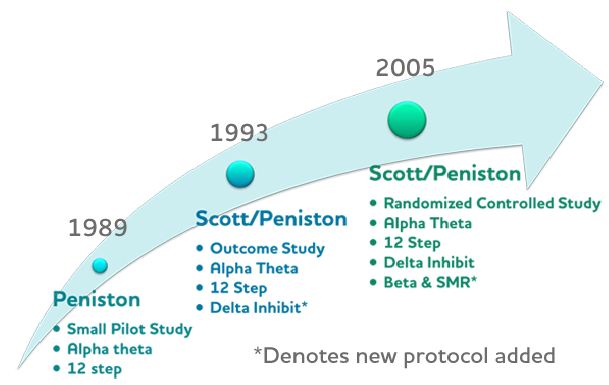
Results from this landmark UCLA addiction study:
- Improved abstinence rates – Sobriety rates 12 mos. after treatment: 77% abstinence for neurofeedback group; 44% abstinence for control group.
- Improved retention in rehab – There was a 60% reduction in clients prematurely leaving treatment against medical advice (AMA) in the neurofeedback group.
- Improved personality inventory – There were significant improvements in 5 of the 10 MMPI-2 scales, the most frequently used personality tests in mental health.
This UCLA addiction study has been successfully replicated by other research teams. In addition, addiction treatment centers that have implemented the same neurofeedback protocols used in these addiction studies have been able to replicate the improved retention rates documented in this addiction research. Alpha-theta is the only neurofeedback protocol proven effective for the addicted population.
Provided is a full-text copy of the Scott-Kaiser Randomized Controlled Trial (also known as, the UCLA addiction study).
Addiction studies that preceded the Scott-Kaiser study include:
- 1989 Eugene Peniston Pilot Study, n=10
- 1993 Scott-Peniston Outcome Study, n=24
The evolution of neurofeedback addiction protocols from the original Peniston Protocols into what are now called the Scott-Kaiser Protocols, named after the two lead scientists in the UCLA addiction study.
Another addiction study of interest conducted in 2008 compared the clinical brainwave signals of an alcoholic group to that of a control group. When the alcoholics were exposed to stimulus their brain cells were activated and emitted higher voltage than that of the control group. This means that impulsive behavior increased when the alcoholics were exposed to a stimulus. This excessive arousal in response to a stimulus may have severe consequences for an addicted person. For more about the addicted brain, go to understanding addiction. Click for a full-text copy of this addiction research.






